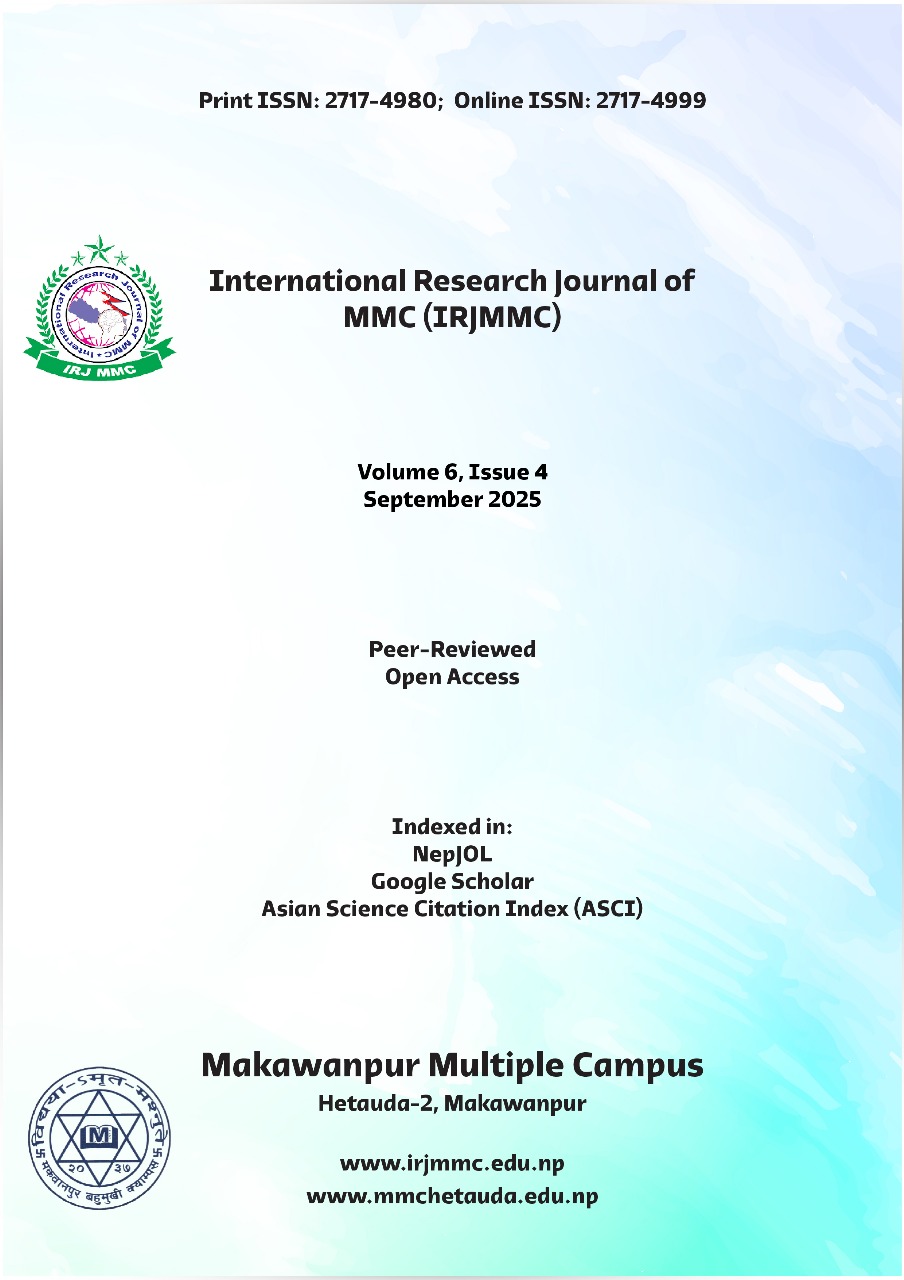Sky Burial in Upper Mustang: Cultural, Spiritual, and Ecological Perspectives on a Death Rituals in Nepal
DOI:
https://doi.org/10.3126/irjmmc.v6i4.85247Keywords:
sky burial, Upper Mustang, ritual ecology, cultural preservation, vulture conservationAbstract
This research explores the cultural, spiritual, and ecological significance of the sky burial ritual (Jhator) in Upper Mustang, Nepal a remote Himalayan region where Tibetan Buddhist practices persist despite growing external pressures. Sky burial, in which the deceased body is ritually dismembered and offered to vultures, embodies Buddhist principles of impermanence, compassion, and interdependence with nature. This research is based on qualitative study. Drawing on ethnographic fieldwork, the research relies on primary data collected in April 2025 through semi-structured interviews with local elders and ritual specialists and 6–7 days of participant observation. This study highlights how the ritual not only reflects spiritual cosmology but also contributes to ecological sustainability through the natural disposal of human remains. The study combines primary ethnographic data, which includes interviews and observations of ritual, with secondary data from relevant literature, to examine the cultural, spiritual and ecological importance of sky burial in Upper Mustang. The tradition faces critical threats: declining vulture populations, outmigration, modernization, and the erosion of indigenous knowledge. The collected data were analyzed by a systematic thematic analysis of cultural, spiritual and ecological aspects. The research reveals that while the practice of sky burial is diminishing, it continues to serve as a powerful marker of identity, cultural continuity, and human-nature connection. This study aims to fill gaps in interdisciplinary scholarship by offering a comprehensive account of sky burial in Upper Mustang, thereby contributing to anthropological literature, cultural preservation, and environmental conservation discourse in the Himalayan region. The implications of this research involve the areas of cultural preservation, ecological conservation, and heritage policy and suggest how indigenous rituals can provide a foundation for sustainable practices and support the safeguarding of Himalayan intangible heritage.
Downloads
Downloads
Published
How to Cite
Issue
Section
License
Copyright (c) 2025 International Research Journal of MMC (IRJMMC)

This work is licensed under a Creative Commons Attribution-NonCommercial 4.0 International License.




